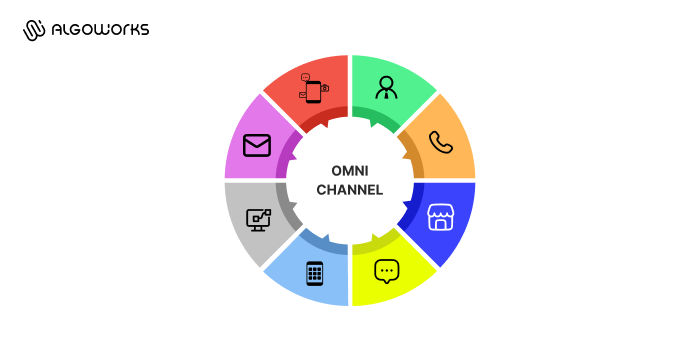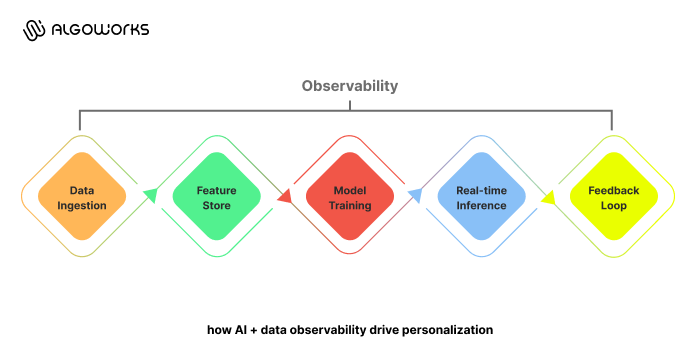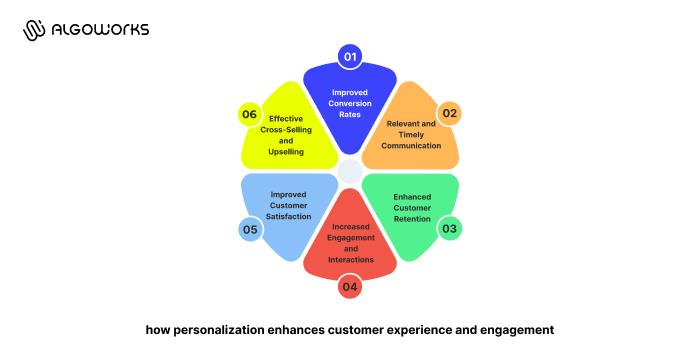How AI and data observability drive personalization in omnichannel experiences
Ever notice how your favorite retailer seems to know exactly what you are looking for; even before you type it in the search bar? Or how a streaming app lines up recommendations that feel oddly in sync with your mood? That is not intuition; it’s AI interpreting intent in real time, powered by data flowing across system.
But the real question is: how do brands make sure those decisions are accurate and trustworthy when the data behind them is shifting constantly? The answer lies in two key disciplines: AI for decision and data observability for trust. One decides, the other ensures the inputs (and outputs) are sound.
Let’s break down how these two forces work together to shape omnichannel personalization and why trust in data is the backbone of a true omnichannel experience.

What is omnichannel experience?
Omnichannel is often misunderstood as simply being present across multiple channels. At its simplest, it means creating a single, continuous customer journey.
Take an enterprise client who raises a ticket in Salesforce, follows up via an AI chatbot in the mobile app and later discusses the same issue on a quarterly review call. Because all interactions are connected, the customer success manager already has the history at hand. The client doesn’t need to repeat themselves; and the company looks competent and responsive.
That is the principle of omnichannel personalization: consistent, connected and customer-first.
Why is omnichannel harder than it looks?
On the surface, connecting systems sounds simple: sync the data and make it available everywhere. However, in reality, data rarely cooperates and it lives everywhere; in CRM systems, ERP platforms, POS systems, website analytics and chatbot logs. Moreover, it is constantly changing because each system has its own schema, refresh intervals and quirks.
The breakdown often looks like:
- A customer updates their email on the app but not in-store.
- A payment failure gets logged in one system but not another.
- Pipelines break silently, leaving stale records behind.
To handle this, pipelines must be monitored for freshness (is the data up-to-date?), accuracy (does it match reality?) and completeness (are key fields missing?). Without these checks, the very AI models end up working with half-truths; hurting omnichannel personalization results.

How AI + data observability drive personalization
So, what really makes omnichannel work? Two main pillars are:
AI as the personalization engine
AI is the reason personalization feels “smart”. It interprets intent and determines the next best action. Netflix is the perfect example: its recommendation engine accounts for 75% of what users watch. Here is how:
- Collaborative filtering finds patterns between users.
- Deep learning recommenders capture subtle relationships.
- Reinforcement learning adapts to behavior in real time.
Another example is Amazon’s AI system that can predict both predictive (long-term purchase likelihood) and reactive (real-time session recommendation) models together.
But remember AI is only as good as the data it receives. And in omnichannel personalization, data reliability makes all the difference.
Data Observability as the Trust Layer
That is why data observability acts as the quality control system. It regularly monitors the pipeline to make sure that:
- Data is fresh and is arriving on time.
- Volumes are within expected ranges.
- Values haven’t drifted away from norms.
- Schemas have not silently changed.
- Lineage is traceable for audits and debugging.
Some fine examples include abandoned cart emails sent to customers who have already purchased. This is not AI’s fault, but missing or delayed data issue. Such breakdowns derail omnichannel personalization.
Where AI and observability meet
Now, let’s look at how the two actually work together behind the scenes.
- Event streams capture activity from websites, apps, POS systems and support platforms.
- Identity resolution stitches profiles so one customer doesn’t appear as three different records.
- Feature pipelines transform data into useful signals like recency, churn probability or browsing frequency.
- Models are trained and deployed, while observability checks for drift or training-serving mismatches.
- Inference APIs respond in milliseconds, with observability tracking latency and error rates.
- Customer feedback closes the loop and observability ensures no signals are lost along the way.
The result of all this leads to omnichannel personalization that feels seamless and trustworthy instead of fake and awkward.
What most companies miss
Mostly companies focus on having the right algorithm. But the problems lie elsewhere:
- Identity resolution is as hard as building the AI itself. It defines whether the personalization will sit right or not.
- Training-serving skew is really tough. A streaming service might train on one kind of user data, but of the live serving data drifts, the AI starts making irrelevant suggestions. Observability detects this before it spirals.
- Compliance is a must.
- Edge personalization ensures reliability on mobile devices, kiosks or IoT sensors where latency is critical.
These are the details that separate a theoretical strategy from practical omnichannel personalization.

The business impact of reliable personalization
The impact is huge and measurable, for instance, Netflix credits its recommendation system with saving the company over $1 billion annually in retention. Retailers like Amazon see higher conversion rates by avoiding irrelevant promotions. Data engineers are spending less and less time chasing broken pipelines.
And for the customers, the impact is simple: they trust the brand. A shopper who feels recognized across web, app and store is far more likely to stay loyal; proof of effective omnichannel personalization.
The future of omnichannel personalization
The road ahead is even more exciting. Generative AI is beginning to create dynamic, hyper-personalized experiences; custom product descriptions, individualized marketing campaigns and context aware support dialogues.
Observability is also evolving. It is no longer just about data pipelines; it now extends into model observability; tracking drift, accuracy, bias and fairness. This will give an ethical layer to omnichannel personalization.
Closing thought
AI provides intelligence and observability provides reliability. Without one, personalization lacks scale; without the other, it lacks trust. Together, they transform omnichannel personalization from a marketing promise into a daily reality for customers. At Algoworks, we bring these two forces together: AI, data, and engineering to help enterprises build applications that deliver personalization customers can truly trust.
